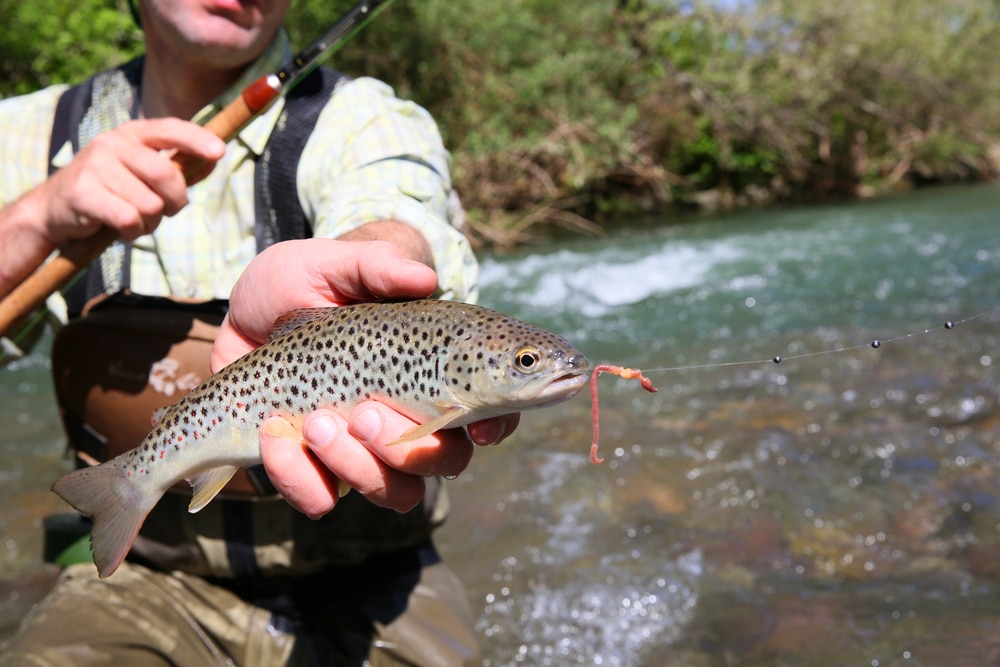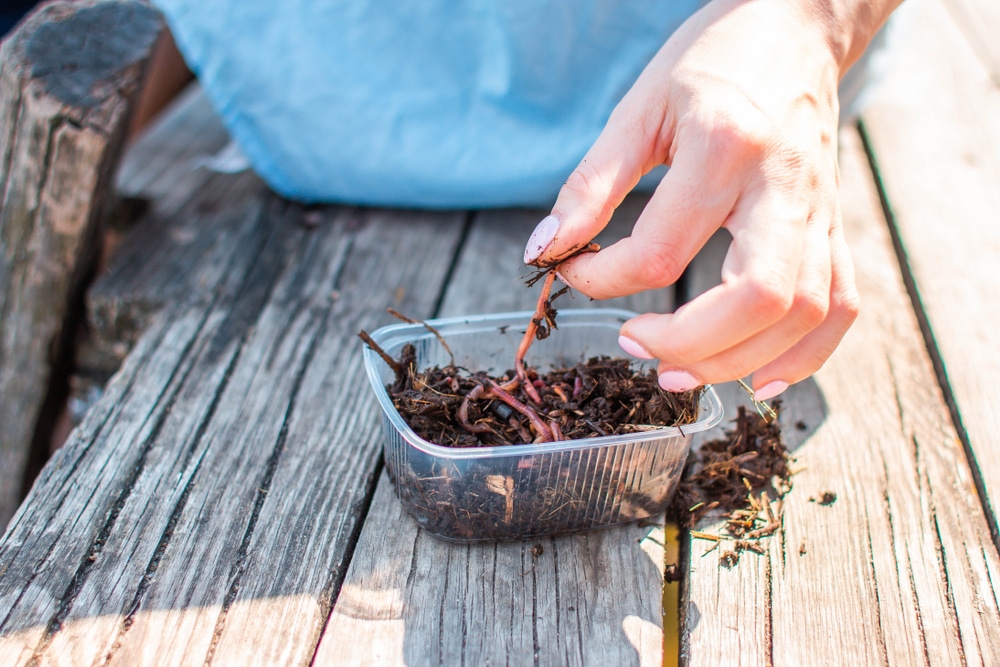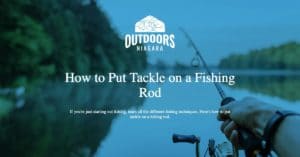There is a wide variety of fishing rods available for fishing with worms.
A worm setup is a single hook line with a fairly light bait – live or soft plastic.
Many anglers experienced and new to the sport wonder what action to use when worm fishing.
This article covers how to choose the best action for rigging your pole with a worm.

Contents
What Action Rod for Worm Fishing
If you read the advice on the internet, you end up with a range of rules that apply to fishing rods when you use worms as bait.
Some claim that a fast action rod is needed, while others tell you that a heavy action rod is what you need.
There is no wonder that there is so much confusion over picking a fishing rock for worm fishing.
Here are a few facts that help to weed out bad information.
Action – is the place along the fishing rods blank where the pole bends underweight. It is a stat that translates energy from the hook to the angler’s hand. It helps discern whether a fish bites the bait or if the sinker is rolling over gravel.
Rod Length – The length of the rod, in this situation, is all about casting accuracy. How accurate do you need the cast to be to hit your target patch of water? Rod length also impacts maneuverability which can be a challenge when fishing in shaded waters where there are trees and brush.
Casting – In this situation, casting is about the hook’s final weight, worm, and sinker. Light set-ups are not going to cast too far. Heavy set-ups will cast farther, but you risk losing your worm since to cast farther means more force.
The point is that there are limits to what you can achieve, which leads us to the answer that we need to choose the best fishing rod for worm fishing.
Heavy Action is good for worm fishing. Generally, we are talking about smaller fish – under 4 pounds.
Fast action rods are suited to bigger fish in the ten-pound range.

What kind of rod do you use for worm fishing?
Shorter rods are ideal since you will not be casting more than 30 yards.
The hook, worm, and sinker weight will not take the line much farther.
Aim for a fishing pole that is between 6 feet and 7.2 feet in length.
The action should be heavy or, at the very least, medium-heavy.
Heavy action rods have good accuracy to the 30-yard length.
Is a medium-action rod good for worm fishing?
A medium-action rod is not the greatest choice for worm fishing.
Heavy action works better.
However, you could get by with a medium-action rod for worm fishing.
If you are looking at purchasing a rod for worm fishing, then opt for a heavy action rod.
If you are trying to make do with what you have, a medium-action rod will be okay, but not much more than just okay.
Are worms good for fishing?
Worms are good for fishing.
They are natural fish food, and they wash into the water column during rainy seasons.
Anglers use worms as bait to catch smallmouth bass, largemouth bass, trout, bluegill, perch, crappie, and other sports fish.
How do you catch big fish with worms?
The trick to catching any fish is how you present the bait. In the case of big smallmouth bass or largemouth bass is setting up the line to get the worm to the right depth of water.
If you are fishing along with structures – rocks, sunken logs, etc., you want to sink the worm to those depths.
Big fish tend to lurk, and the idea is to tempt them into a fast strike near the place where they lurk. This is especially true of bigger walleye.
The opposite of this is pike, which may hide near the surface. If you are fishing for pike, cast the worm over the top of the weed patch.
Drag the worm slowly through the weeds with little short flicks of your wrist.
Be ready for the strike because the strike is explosive with pike, especially northern pike.
A tip for fishing for big pike is to use a stainless leader so the fish does not snap the line by biting it.
How do you fish a river with worms?
There are a few ways to fish the river with worms as baits with or without a rod. You can let the worm and line float downstream if you are upstream.
That is a good tactic when you are fishing above a riffle – A riffle is a section of a river where the water is shallow and runs over rocks.
This structure – the riffle – attracts fish who wait at the end of the riffle to eat insects that are washed off the rocks. Floating the worm down the riffle is a good way to hit the fish at the bottom.
You can fish upstream, but that is not usually the best method. The bait will float back to you so that you will constantly be reeling in line.
If you are fishing pools, set up the line with a leader as follows. Add a sliding sinker to the line, 1-2 ounces or less.
Place a split-shot – smaller is better – at the three-foot mark.
The split-shot keeps the slide weight well away from the hook and defines the length of the leader.
On the end of the leader, tie your hook. 4-8 inches above the hook, add another split-shot maybe twice as heavy as the one you used to stop the slide sinker.
What this setup does is it gives you weight to cast out into the pool.
The heavier slide sinker will take the hook to the bottom.
The second split-shot near the hook will also sink to the bottom, but it gives the hook a chance to float above the bottom, where it is highly visible to fish.
Use smaller worms for shorter casts and larger worms for longer casts.







